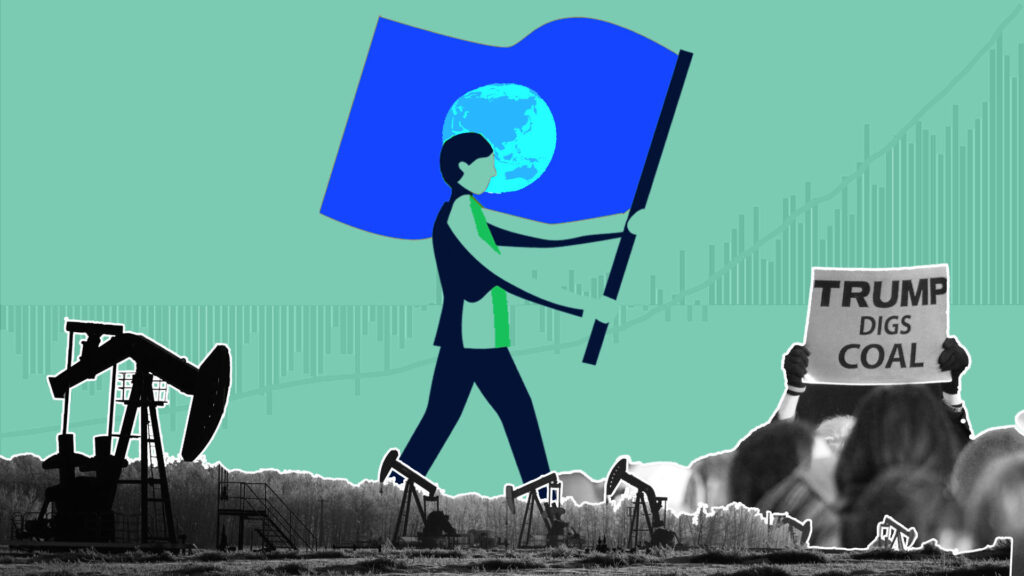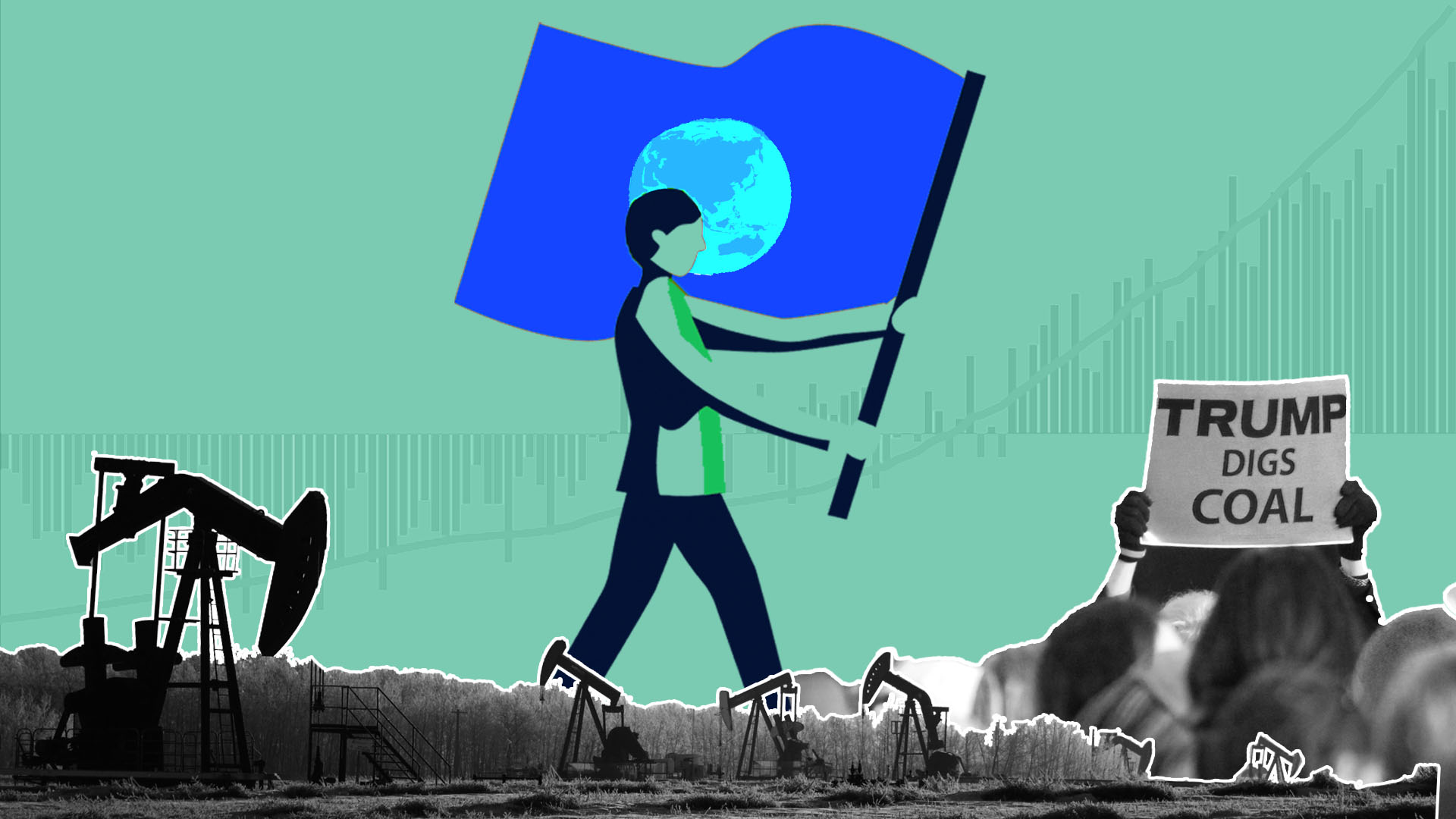
There is no debate regarding climate change: it’s real, it’s already happening at an alarming rate, and urgent action on an international scale is needed to mitigate its effects.
But another debate divides the climate movement: do individual actions such as behavioral and lifestyle changes actually do anything meaningful, compared to advocating for systemic changes from state governments and corporations?
Critics of personal lifestyle changes, like purchasing reusable products, riding bicycles or conserving water and power at home, say that this “eco-consumerism” is merely a way to excuse and shift responsibilities away from governments while being ineffective at addressing the roots of climate change. They say that promoting individual responsibility actually paralyzes actual change, because people will be content at making lifestyle changes rather than demanding systemic changes.
The effects of individual climate action can also seem minuscule when studies have pointed out that 70% of all greenhouse gas emissions in the world come from just 100 investor and state-owned fossil fuel companies. As such, advocates for systemic changes have instead insisting on calling for governments and industries to take the lead in mitigating climate change, and to stop blaming individuals for the crisis.
But what the debate misses is that choosing between individual lifestyle changes and advocating for systemic climate action are not mutually exclusive. More importantly, the climate emergency is an ongoing reality, to speak of its effects in the future tense misrepresents the situation we are currently in. If we frame our discussions towards hoping for an abstract concept of “systemic action” in the future, by then it will have already been too late.
Ultimately, individual actions are something that we can do immediately, from which we build upon a bigger and more impactful climate action. But how do we go about doing just that?
Inconsistency and unreliability
While states and corporations have the authority and resources needed to implement systemic changes, their track record in doing so leaves a lot to be desired.
International state action and regulation, at least on paper, appears to be the most effective form of tackling the climate crisis. Such efforts have already yielded successes, like when the 1987 Montreal Protocol effectively phased out ozone-depleting substances from global use and set the course for the restoration of the ozone layer within the next few decades.
But state governments can be inconsistent in their policies, and at worst, are themselves also responsible for much environmental damage due to mismanagement, misguided policies, and complicity in infrastructure projects that threaten indigenous ancestral lands and key biodiversity areas. They can also suddenly show disregard for international agreements, as demonstrated by the United States when they pulled out of the Paris climate agreements under the Trump administration and pledged support to the coal industry. In more drastic cases, governments have outright used state forces to harass, detain and even murder environmental activists and land defenders by the hundreds. Even supposedly “liberal” governments such as Canada have been called out for their hypocrisy in promoting climate action on the world stage, while also continuing to expand its oil sands operations in Alberta which have been dubbed the world’s most destructive.
Industries and corporations on the other hand, are also unreliable as they tend to misuse environmental and climate advocacies as nothing more than public relations tools. Despite advertisement campaigns from companies like Shell or Exxon promising to take significant actions to make their companies “greener”, in reality a report by the Global Gas and Oil Network has shown that the fossil fuel industry as a whole is investing US$1.4 trillion in new oil and gas extraction projects for the next few years. The same report has also shown that almost all major international oil companies have approved new oil/gas projects that are not compliant with the Paris climate agreements.
Thus, it is difficult to completely trust state governments alone to be completely invested in advocating for climate action, when they themselves have acted as obstacles towards the environmental cause. The nature of international policy-making, rife with vested interests, constantly changing regimes, and the lack of a guarantee for ensuring compliance, makes relying on states to do the heavy lifting in climate action a slow, unwieldy, and ultimately unreliable method of climate action. It is unlikely we can also expect to see corporations, especially in the fossil fuel industry, to budge from their profit-seeking nature when the cause for protecting and restoring our Earth is diametrically opposed to their short-term business model.
Interlinked struggles
Mainstream, individualist and capital-oriented climate initiatives tend to focus on small-impact actions like reducing household power consumption, practicing “reduce, reuse, recycle” and purchasing “green” products. Critics have pointed out, though rightfully, that even doing all of these consistently still has limited effects in mitigating climate change. Some higher impact actions demand greater sacrifices for individuals, among them eating plant-based diets, not driving a car, avoiding international flights, and having fewer children (or no children at all.) While individuals who commit to these are commendable, the reality is that we simply cannot expect that a significant part of the population (across different cultures, environments and socio-economic backgrounds) will commit to these sacrifices, at least not within the urgent time frame that climate action demands. The climate emergency is happening today; we need action now, not later.
But as individuals, there are ways we can act that will ripple across and have the greatest benefit to those that need it.
For example, one way to tackle climate change is by supporting low carbon-emitting community forest enterprises (CFEs), which research and experience has shown are highly effective at protecting the forests and empowering the communities that depend and care for them. Fighting climate change involves forest conservation, and that is impossible to do without the support of the indigenous and forest communities who live in, feed from and guard the forests that they depend on. To do so, their economic needs must be met so that they will not be forced to migrate to urban areas for employment or be forced to plant cash crops just to make ends meet.
When we factor in that indigenous peoples protect 80% of the world’s biodiversity areas and possess traditional knowledge and practices in adapting, mitigating and reducing the risks associated with climate change, it becomes an imperative that we link our efforts towards theirs, such as in recognizing the rights of indigenous peoples and local communities on their customary land and forest tenure. Supporting CFEs by patronizing their forest products ensures their economic security and their sustainability efforts can continue on, as they have done so for countless generations before.
Consuming wild foods is another often overlooked way that people can help reduce their carbon footprint from the food they eat. While deforestation and land-use change from food production is a major contributor to climate change, supporting wild foods contributes to robust food systems that are inherently resilient towards climate shocks. They also contribute to the food security and health security of forest-based communities, who in turn take a leading role in protecting key agrobiodiversity areas through sustainable indigenous conservation practices.
Another issue that people almost never associate with climate change is gender equality. For climate action to be effective, we need to recognize that women, men and children experience the impact of climate change differently based on where they live, their livelihoods and their roles in families and communities. The dominance of patriarchal structures around the world means that women are often more significantly impacted by the effects of climate change. As individuals, we can play our roles in fighting for gender equality and providing platforms for women to take part in decision-making and leadership, which has shown to improve the outcomes of climate related policies and projects.
Individual action on climate change need not be confined to discussions of just directly reducing one’s own carbon footprint. It can also be done through indirect means that, when combined with advocacy, solidarity and direct action, can net us the systemic changes we desire.
Reconnecting the individual
The false dichotomy between individual and systemic climate action needs to end. Yes, even the most concerted individual efforts would barely move the needle in reducing overall carbon emissions compared to systemic changes. But that shouldn’t be the goal of individual action: it should be all about creating meaning and connections for our climate situation.
Today, very few people can claim to be unaware of climate change and its causes. We already know that fossil fuels, deforestation and land use conversion are among the biggest contributors to climate change. But people aren’t clamoring to trade in their vehicles for electric, hybrid or biofuel alternatives, nor are we rushing to close down all coal and oil-fired power plants. People aren’t protesting en masse to halt major infrastructure and extractive projects that damage entire swathes of land. People seem to treat news of indigenous groups being denied their basic rights with relative apathy, at least relative to news involving crime or celebrity controversies. Somewhere along the way, we became too disconnected to even react. We worry with bated breaths over increasingly grim news of climate disasters, but we’ve somehow resigned that this is some other person’s problem, not ours. And that is what the individual can act on: to re-introduce the lost relationships we had with our land and with our fellow humans regardless of who they are and where they are.
Sure, not everyone of us can become climate scientists, or climate-aware lawmakers, eco-conscious entrepreneurs, or full-time environmentalists or development workers. But all of us can become climate advocates and communicators in our own ways. Not in the sense of big internet or media influencers with thousands of followers, but one that communicates climate advocacies to our families, to friends, to colleagues and our local communities as a way to connect our efforts towards a common goal.
Before Greta Thunberg became the household name of Gen Z climate activism, she was an ordinary teenager whose first goal as an environmental activist was to convince her parents to make lifestyle choices that reduced their carbon footprint. Then, after school, she would stand alone outside the Swedish parliament with nothing more than a few words in black paint on a whiteboard signboard: “Skolstrejk för klimatet” (School strike for climate.) A year later, the movement she started has ballooned to millions of youth participants and caught the attention of the world.
But what truly made her the voice of an exasperated generation was also her blunt (or as others would say, ‘rude’) way of talking, especially towards world leaders. Whereas others would speak formally and with respect, Greta opened the 2019 UN Climate Action Summit by berating and scolding an entire assembly of senior diplomats and state representatives with the now iconic “How dare you!” and telling them outright that they have failed and betrayed her generation. The effectiveness of her message and approach cannot be understated. Despite going against popular notions of “effective climate-change communication” that suggest talking about hope and action items, her blunt and straightforward approach might just be what is needed to reconnect people with messages of climate action.
Perhaps more than any sector, the youth have the most right to speak frankly and gravely about the climate crisis as many of them have been born into a world already beset by the consequences of the actions of generations prior.
In the Philippines, Marinel Ubaldo was the teenage daughter of a fisherman when Typhoon Haiyan struck in 2013, killing thousands of people in her province and destroying everything her family owned. Practically overnight, she was forced to confront the reality of climate-associated disasters to the most vulnerable sectors of society. Which is why in 2019, she went alone to the Manila headquarters of Royal Dutch Shell, stood opposite a line of corporate security guards, and demanded climate justice from the fossil fuel giant. She has since organized several youth climate strikes and testified as a witness in human rights investigations on corporate responsibility in climate change.
In India, nine-year-old Ridhima Pandey filed a court case against the Indian government, arguing that the country has not acted on its promises as a signatory of the Paris Agreement specifically on regulating and reducing greenhouse gas emissions. A child from Uttarakhand in northern India, Ridhima witnessed how extreme weather in her region triggered floods also in 2013 that killed several thousand people. While her case was eventually dismissed Indian courts, she later joined Greta and 14 other young activists in filing a complaint with the UN against Argentina, Brazil, France, Germany and Turkey in 2019 for infringing on the rights of children by failing to act with urgency to address the climate crisis.
Climate activists are now as young as they can be, mainly because they see it necessary to fight for a future that they deserve. In an ideal world, the youth should be enjoying their carefree years instead of butting heads with corporations and governments to seek climate justice. Their struggle is a necessary one if we hope to push individual climate action towards more and more people. In doing so, we can ensure that greater pressure is placed on governments and industries to clean up their act and take the climate emergency seriously. Every individual convinced to take action for the climate is another voter and another customer that puts eco-conscious decisions to the forefront when it matters most to politicians and corporations.
So if it only takes one, will you step up?
Article and illustration by Robin Bustamante, NTFP-EP Asia. “Trump Digs Coal” photo by Tammy Baker (CC BY 2.0).






